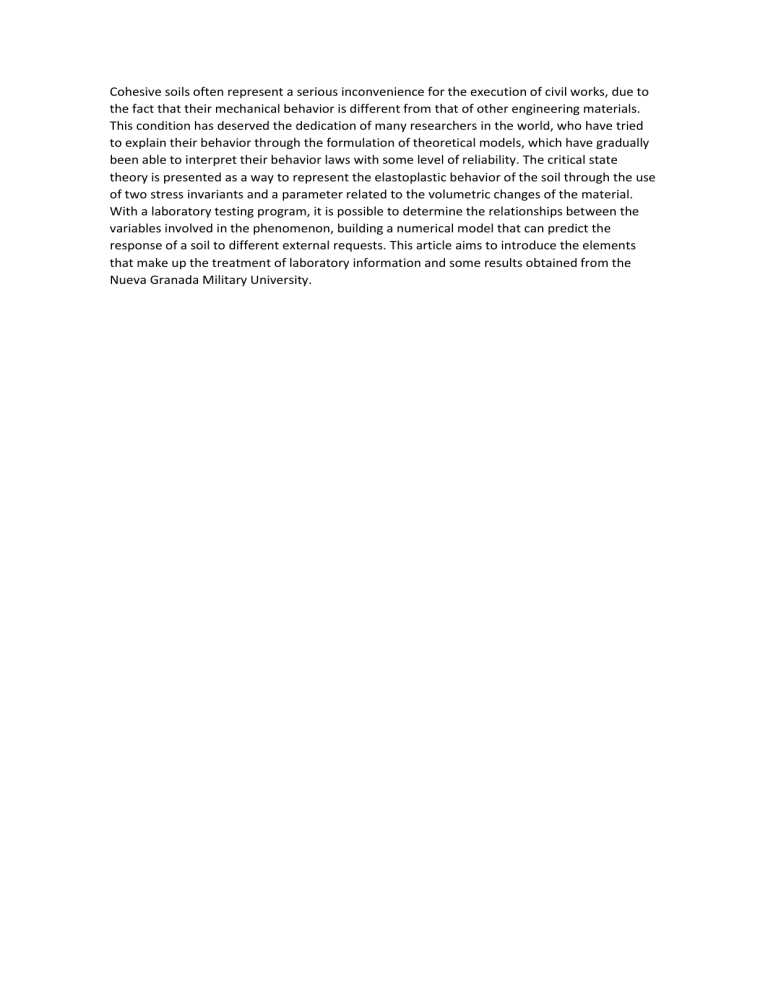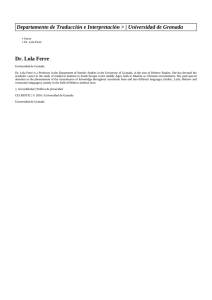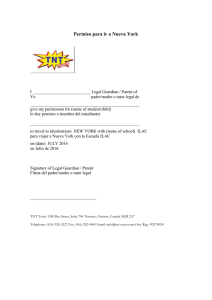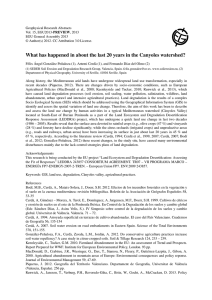
Cohesive soils often represent a serious inconvenience for the execution of civil works, due to the fact that their mechanical behavior is different from that of other engineering materials. This condition has deserved the dedication of many researchers in the world, who have tried to explain their behavior through the formulation of theoretical models, which have gradually been able to interpret their behavior laws with some level of reliability. The critical state theory is presented as a way to represent the elastoplastic behavior of the soil through the use of two stress invariants and a parameter related to the volumetric changes of the material. With a laboratory testing program, it is possible to determine the relationships between the variables involved in the phenomenon, building a numerical model that can predict the response of a soil to different external requests. This article aims to introduce the elements that make up the treatment of laboratory information and some results obtained from the Nueva Granada Military University.











